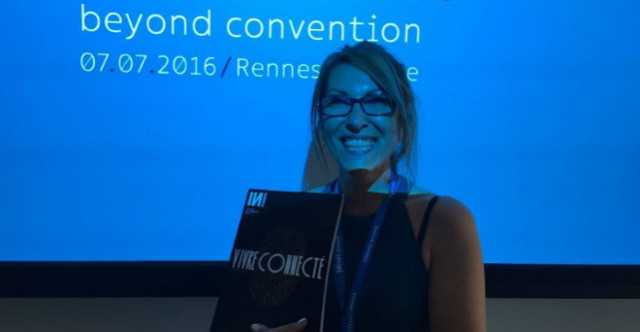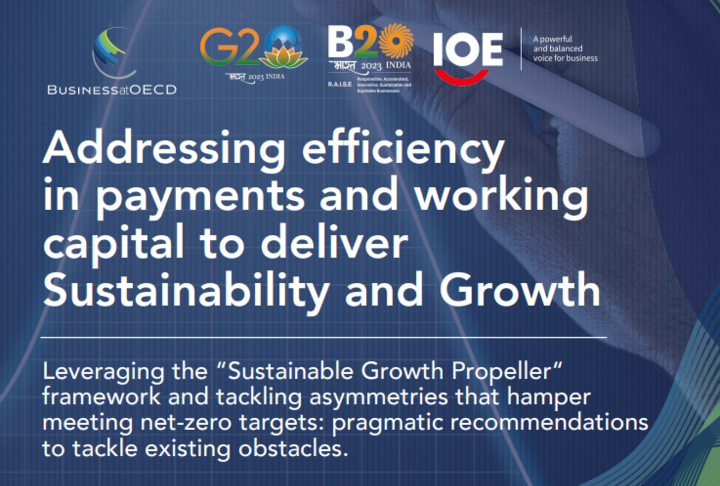What this Aussie entrepreneur learnt from attending a “life-changing” tech conference in France – StartupSmart

Technology is wondrous, it creates the opportunity to assist, facilitate and enhance the human experience.
All this drive and energy around innovation focused on technology, but are we missing the point? Are we focusing too much on the technology and not enough on solving a problem for and designing for people ? This was the focus of Dive-Event – a multidimensional and multisensory global event that showcased human centred innovation, held on July 7 in Rennes, France.
Bravo to B<>com Institute of Research and Technology (IRT) for believing in Dive, an experiment to flip the focus of innovation from technology-centred to human-centred.
I feel privileged to have been asked to host the event, apart from meeting the most inspiring people on the planet, the experience has affirmed my view and strengthened my resolve that tech can be applied to solve social problems.
Dive, founded by b<>com’s team of innovators led by Emmanuelle and Carole, was for me a life-changing event.
The event curated human centred innovation across many paradigms – workplace, calm tech, assistive tech, AR, VR, Dive-Event presented 11 speakers from seven countries to share their insights on human centred innovation and the future of technology.
Dive is an agenda setting event – pioneering human centred innovation as the future.
The event was beautifully designed with oxygen and culinary breaks, music and a wrap party, described as beyond convention, with 18 hours to change our view and vision of innovation, and best of all, immersion with 100 leaders across the tech, design, innovation and entrepreneurial ecosystem.
Speakers became attendees and continued conversations throughout the day, enabled by the intimate environment.
Workplace happiness
Dive kicked off with Mark Catchlove, Herman Miller UK a thought leader in workplace design started the journey with the science of happiness in the workplace.
Mark’s delightful and enlightening talk showed us that while we create the space for open plan collaboration, we still need the time out spaces to think and create.
Interestingly our biggest drivers at work are purpose, achievement , autonomy and belonging, while security and status are at the bottom of our priorities.
“Forget technology, you don’t check a room for air, you expect it,” Mark Catchlove, Herman Miller said.
Most of our creative thinking time is when we are alone – for most people that big idea comes while taking a shower, walking in nature, at a bar or cafe, generally when we are in a relaxed state. We can recreate this now with AR and VR technology in any space.
Mark envisages spaces where we can sit in room or pod and be transported to the forest, an island or wherever for 10 minutes to recharge.
Finding the user in e-health
Next up was an e-health panel looking for the ‘user’, facilitated by Benjamin Adler, award winning tech journalist.
All panelists, involved in tech startups in the health space, affirmed the need to get frank and fearless feedback from customers to shape the product, the product designed for the people using it.
InnoVision’s Glasses Off uses the brain’s neuroplasticity to enhance visual skills by exercising the brain’s image-processing area. The app has a 90% success rate and is constantly developing with user feedback.
Calm technology
Cyborg anthropologist Amber Case wowed the audience with “Calm Technology”, the need to bring back the focus to the human, and how non intrusive design will shape our future.
Amber’s talk was hugely enlightening, reminding us to be conscious about who we are designing for, what problem we are solving, and the need for elegant unobtrusive tech that supports rather than distract humans.
Designing technology to work for people rather than having to teach people how to use the technology. Using technology should be effortless.
Emotion factor
Kei Shimada, global director of innovation and business development at Dentsu Inc talked about innovation in Japan and his work in understanding emotion in people. He blew the audience away with his demonstration of bio-sensing technology which tracks how you are feeling though a headset.
Its application in nursing home settings is exciting as it helps carers understand the feelings of non verbal older people with cognitive and physical disabilities. I am certain this is transferable to people with disabilities to assist in communicating how they are feeling to their care providers.
Reinventing storytelling
Mirada studios are reinventing storytelling in the film industry using AR, VR we had the opportunity to test the technology. John Fragomeni, President and Andrew Cochrane, Digital and Interactive Director have worked on our favorite , music clips, videos, films and campaigns bringing characters and stories to life.
They showed how VR and AR can transport you anywhere anytime with a headset. That got me thinking of its application to so many people in hospitals or house bound that could benefit from experiencing being on a beach, in the forest, visit a zoo, see the pyramids or visit New York.
Reimagining retail
Laura Khoury founder of Shoptelligence is reimagining retail using AI and VR and providing a more personal shopping experience using data to provide context.
Product knowledge is often overlooked, using data optimisation helps understand the human process and act as a personal stylist curating thousands of options into a few that meet the customers specific needs.
Imagine this technology used to assist service providers tailor care packages to people in need – I can see this repurposed in a number of settings like employment, disability care and training, the possibilities are endless.
Future of play
Finally Frima Studios duo Luc Beaulieu and JP Doiron mesmerised us with the future of play and the mind blowing haptic suits and eye tracking technology changing the way games interact with us in our world as well as our immersion in virtual worlds.
Imagine using augmented reality to have super heroes visit kids in care, or have relatives overseas visit, or for collaborative working across multiple sites, the possibilities are up to our imagination.
Key messages
Some of the recurrent themes coming out of each speaker were:
- Tech is an enabler
- Key is using tech to solve problems for humans
- Human centred design of technology is the future
This is the exciting part of technology and where my head has been the last two years – finding out that most cutting edge technology can be repurposed for social good as shown by Ladislas with Leka the robot for exceptional kids and Kei Shimada’s emotion sensor for people in nursing homes in Japan.
Equally in Australia startups like HireUp, Fighting Chance and The Remarkables; services like WorkVentures and initiatives like TechFugees Australia, HealthHack, RHoK, ChronicPainHack and GovHack are increasing the stakes of tech applied to solve social problems and that makes me very happy.
The possibilities are limitless and there is increasing mindfulness of the application of technology to improve peoples’ lives.
This article was originally published on LinkedIn.
Follow StartupSmart on Facebook, Twitter, LinkedIn and SoundCloud.

